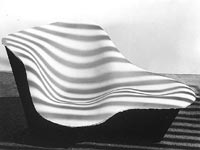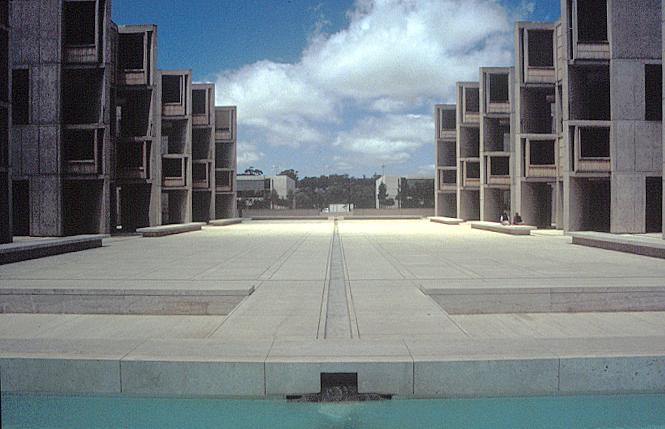Introduction
The architecture design of the 20th century is characterized by the reflection of art elements peculiar to the Enlightenment of Modernity epochs. The development of design movements in the 20th century was based on the consequences of political and social revolutions. The impact of technological development resulted in the design combination of such materials as glass, iron, and steel, underlining the presentation of Industrial Revolution techniques. The analysis of modern design of the 20th century should be focused on the investigation of its outstanding designers, such as Le Corbusier, Eero Saarinen, Charles and Ray Eames, Frank Lloyd Wright and Louis Kahn; these well-known architects contributed to the development of contemporary architecture standards and fashion followed till now.
Modernism in Architecture and Design
Eero Saarinen is considered to be a marvelous and well-known architect contributing to the formation of Finnish American architecture style and the introduction of machine-like rationalism. To understand the main features of modern architecture, one should analyze the major project fulfilled by Saarinen, which is the Technical Center of General Motors in Michigan. One can evaluate the style of famous architects through this work, combining glass and steel for constructing ideal forms of building; special attention should be paid to panels of the building perfectly expressed in blue shades. It is necessary to underline the fact that works of architecture can be characterized by dramatic sweeping staircases; there is a necessity to underline the individual modernism of Saarinen, who belongs to the second generation of architectural movement. (Saarinen, Pelkonen, and Albrecht, 56)
Le Corbusier is a well-known architect of the 20th century referring to the Swiss-French architectural movement; he is the founder of the Modulor system for the identification of appropriate architectural proportion. The central place in his design philosophy was taken by harmony between the objects and elements of construction. One should stress that the most peculiar feature of the architect’s style was the reflection of French style in the construction and buildings. The introduction of Le Corbusier’s design appeared to be highly promoted in modern architectural movement influences the works of many outstanding designers; the basic features of his style are the absence of historical ornament and the presentation of abstract design elements. Besides, the architect strived to introduce the works through pure colors; his houses contain built-in furniture and ribbon windows, as well as dynamic transitions between floors. (Le Corbusier, 2009)


Modernism is considered to be the dominant feature in the architectural development of the 20th century; special focus is paid to organic architecture combining the elements of simplicity and international unornamented design. One of the major characteristics of this movement is the dehumanization of rectangular geometry. A bright illustration of these aspects can be analyzed through the works of Charles and Ray Eames, who are talented American designers, gaining world recognition by their contribution to furniture making; they were interested in graphic and industrial designs depicting these elements in most of their works. It is necessary to underline the fact that designers are the developers of multifunctional writing desks and shelves; they combined the elements of bright coloring and practical value of the furniture through cross supports, dimpled plywood, uprights and perforated panels. The development of modern furniture design was based on characteristics and peculiarities characterizing innovative technologies era and people’s demands and expectations connected with the modernization epoch. These designers make people see the beauty of ordinary objects in buildings and furniture they model. Being inspired by classic music, the designers created beautiful shapes to create elegant sculptures of their furniture and buildings. They made a significant step in the reorganization of ordinary constructing elements through the design of the 20th century. Their interest in graphic design left a print on major works of Charles and Ray Eames being valued throughout the world. (Design Museum, 1999)
Frank Lloyd Wright is a bright representative of modern design movement of American architecture, who focused on interior design and organic architecture. The relationships between the building and site are especially centralized in organic architecture style of Wright. Basic materials used by the architect in construction were wood, stone and cinder block. Additionally, it is interesting to stress that Wright paid special attention to small details in his design style; the external and internal organization of his design is concentrated on the presentation of numerous details, such as furniture, lights and decorations. There is a need to stress that Wright continued the tradition of glass industry presentation in constructing design. According to organic architecture philosophy, glass is the material, which can appropriately underline the nature and message of the objects and reflect their beauty. (Secrest, 114)

And, finally, one should take into account the architectural style of Louis Kahn, who is a famous Estonian Jewish architect; the style of design characterizing major Kahn’s works, can be identified as monolithic and monumental. Kahn is considered to be the author of major building projects in the USA, through which he strived to underline the natural size and power of constructions. One should underline the fact that the architect successfully depicted all his constructions through the importance of natural image presentation. Nowadays design modernism is characterized by the introduction of natural elements in buildings and art, which is close to the tendency followed by Kahn. His style may be characterized by some rudeness and objects exaggeration; nevertheless, it appeared to be an inspiration for numerous designers of the 21st century. (Kieffer, 202)
A great variety of architects of the 20th century strived to reflect the elements of modernism in their works, focusing on the following details: vertical and horizontal lines stressing, the form should follow the function; the structure should be distinctly expressed, machine aesthetic adoption and the presentation of ornament. All these features build a clear presentation of modernism in architecture, which is kept in the 21st century as well.
Conclusion
The analysis of the brightest representatives of architecture developed in the 20th century allowed evaluating the most important aspects and elements, centralized by talented specialists: the usage of natural building materials, such as glass, wood and stone. The style of architecture in the modern period can be characterized by the architects’ desire to show the beauty of natural objects being combined in constructions and buildings. The analysis of major works demonstrated their attractive style combined with décor and light centralization; the architects, being impacted and inspired by history and classic music, managed to create a wonderful atmosphere through exterior and interior designs.
References
Design Museum. Charles and Ray Eames. Design Museum Collection. 1999. Web.
Kieffer, Jeffry. Readings from the Architecture of Louis Kahn. Xlibris Corp., =2001.
Le Corbusier. The Villa Savoye. 2009. Web.
Saarinen, Eero, Pelkonen, Eeva-Liisa, and Albrecht, Donald. Eero Saarinen: shaping the future. Yale University Press, 2006.
Secrest, Meryle. Frank Lloyd Wright: a biography. University of Chicago Press, 1998.